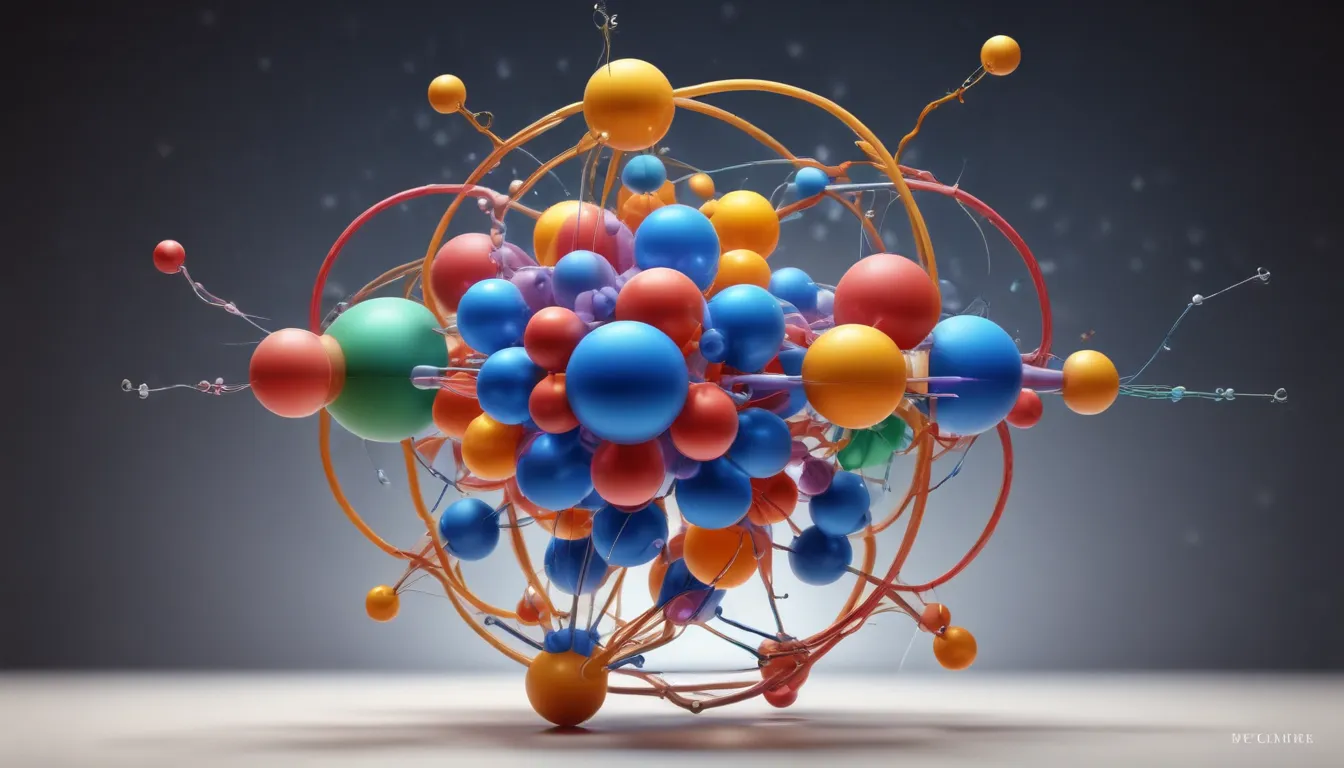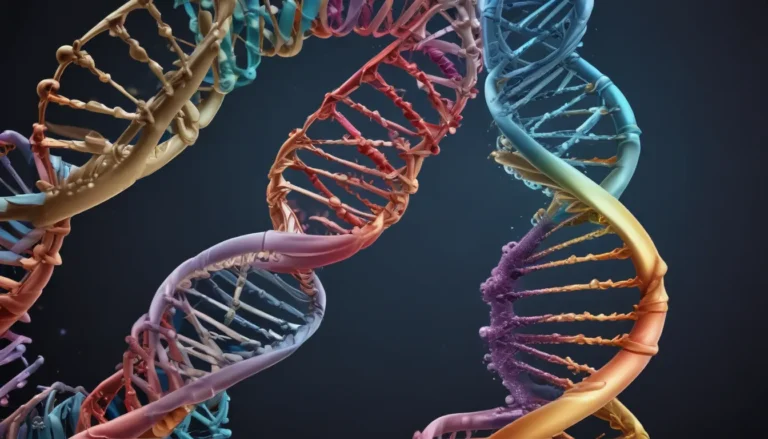A Note About Images: The images used in our articles are for illustration purposes only and may not exactly match the content. They are meant to engage readers, but the text should be relied upon for accurate information.
Chemistry is a captivating subject that unveils the intricate complexities of the world around us at a molecular level. At the heart of this fascinating field lies the concept of molecular orbitals, which play a crucial role in shaping the behavior and properties of molecules. In this article, we will take a deep dive into the mesmerizing world of molecular orbitals, exploring 13 mind-blowing facts that will enhance your understanding and appreciation of this fundamental pillar of chemistry. Join us on this enlightening journey as we unravel the mysteries of molecular orbitals and discover the wonders of their significance.
Key Takeaways:
- Molecular orbitals are electron neighborhoods within molecules, influencing their stability and reactivity.
- Understanding molecular orbitals enables chemists to predict molecule behavior and design novel compounds.
- Delving into molecular orbitals unveils the hidden world of tiny particles, offering a peek into their secret realm.
The Enigmatic World of Molecular Orbitals
Have you ever marveled at the enigmatic realm of molecular orbitals? These quantum entities serve as the building blocks of chemical bonding, shedding light on the intricate dance of electrons within molecules. Let’s embark on a captivating journey as we uncover 13 fascinating facts about molecular orbitals that will leave you in awe of their complexity and significance.
Unveiling the Structure of Molecular Orbitals
Molecular orbitals represent regions of high electron probability within a molecule, formed through the interaction of atomic orbitals from different atoms. This constructive and destructive interference leads to the creation of both bonding and antibonding molecular orbitals, shaping the stability and reactivity of molecules.
Deciphering Stability Through Molecular Orbitals
The stability of a molecule is intricately tied to the occupation of its molecular orbitals. By filling the lower energy bonding orbitals, a molecule gains stability, while populating high energy antibonding orbitals weakens its structural integrity. Understanding this balance is key to predicting molecule behavior.
The Marvels of Hybrid Orbitals
Hybrid orbitals, created through the fusion of atomic orbitals from varying energy levels, facilitate enhanced overlap between atoms. This optimized overlap results in stronger bonds and increased structural stability, showcasing the versatility of hybrid orbitals in molecular architecture.
Quantum Mechanics Unlocks Molecular Bonding
Quantum mechanics serves as the cornerstone for understanding the behavior of electrons within molecular orbitals. This branch of physics provides the mathematical framework to predict electron distribution in molecules, unraveling the mysteries of chemical bonding and molecular interactions.
Aromaticity and Molecular Orbitals
Molecular orbitals play a pivotal role in conferring aromaticity to compounds like benzene. The delocalization of electrons within the ?-system of aromatic molecules endows them with exceptional stability and unique reactivity, showcasing the profound influence of molecular orbitals on compound properties.
Electron Dynamics in Molecular Orbitals
Electrons within molecular orbitals adhere to the principles of the Pauli exclusion principle and Hund’s rule. With only two electrons permitted in each orbital with opposite spins, these tiny particles exhibit defined energy levels and spatial distribution within molecular orbitals.
Influencing Reactivity Through Molecular Orbitals
The occupation of bonding and antibonding molecular orbitals directly impacts the reactivity of a molecule. Filling bonding orbitals enhances stability and promotes chemical reactions, while populating antibonding orbitals weakens bonds and stifles reactivity, illustrating the pivotal role of molecular orbitals in chemical transformations.
Organic Chemistry and Molecular Orbitals
In the realm of organic chemistry, molecular orbitals govern the distribution of electrons within compounds, shaping their reactivity and behavior. This knowledge is essential for elucidating reaction mechanisms, predicting reactivity patterns, and crafting novel molecules with desired functionalities, highlighting the significance of molecular orbitals in organic synthesis.
Unifying Bonding Theories Through Molecular Orbitals
Molecular orbital theory seamlessly integrates valence bond theory and molecular orbital theory, offering a holistic perspective on molecular bonding. By bridging localized and delocalized bonding concepts, this theory provides a comprehensive understanding of chemical interactions, fostering unity among diverse bonding theories.
Visualization and Molecular Orbitals
Advancements in computational methods have enabled the visualization of molecular orbitals, offering invaluable insights into electron density and molecular behavior. These visual representations aid in comprehending the chemical properties and reactivity of molecules, enhancing our understanding of their molecular intricacies.
Spectroscopy and Molecular Orbitals
Spectroscopic techniques such as UV-Vis and IR spectroscopy rely on the interaction between electromagnetic radiation and molecular orbitals to unveil critical information about the electronic structure and properties of compounds. This synergy between spectroscopy and molecular orbitals enhances our ability to probe molecular characteristics with precision.
Embracing the Quantum World of Molecular Orbitals
The formation and behavior of molecular orbitals unfold within the realm of quantum mechanics, underscoring the quantum nature of molecular interactions. Grasping this quantum foundation is essential for comprehending the fundamental processes shaping chemical reactions and influencing the properties of molecules, ushering us into the captivating world of molecular orbitals.
Conclusion:
In conclusion, molecular orbitals stand as a cornerstone of chemistry, offering profound insights into the behavior and properties of molecules. By unraveling the intricate dance of electrons within molecular orbitals, scientists can predict and explain various chemical phenomena, from bonding to reactivity. Through this exploration, we have uncovered 13 captivating facts about molecular orbitals, shedding light on their formation, significance, and impact on chemical dynamics. Understanding molecular orbitals opens a gateway to innovation, empowering scientists to design new materials, develop therapeutics, and analyze complex chemical systems with precision and creativity.
FAQs:
- Q: What are molecular orbitals?
-
A: Molecular orbitals are mathematical functions that describe the behavior and distribution of electrons within a molecule.
-
Q: How do molecular orbitals form?
-
A: Molecular orbitals form through the combination of atomic orbitals from constituent atoms within a molecule.
-
Q: What role does bond order play in molecular orbitals?
-
A: Bond order indicates the strength of a bond, with higher bond orders reflecting stronger and more stable bonds.
-
Q: Can molecular orbitals be visualized?
-
A: Yes, molecular orbitals can be visualized through molecular orbital diagrams, providing a graphical representation of electron arrangement in a molecule.
-
Q: Are all molecular orbitals equally stable?
-
A: No, molecular orbitals exhibit varying energy levels, with lower energy levels indicating greater stability than higher energy levels.
-
Q: How do molecular orbitals influence chemical reactivity?
-
A: Molecular orbitals dictate electron distribution and electron density, which in turn impact the reactivity of a molecule.
-
Q: Can molecular orbitals predict magnetic properties?
-
A: Yes, the presence or absence of unpaired electrons within molecular orbitals can predict the magnetic properties of a molecule.
-
Q: What role do molecular orbitals play in drug design?
-
A: Molecular orbitals aid in understanding the interaction between drugs and molecular targets, facilitating the design of more effective and targeted therapeutics.
-
Q: Are all molecules symmetrical in terms of their molecular orbitals?
-
A: No, the symmetry of molecular orbitals is contingent upon the molecular symmetry itself.
-
Q: Can molecular orbitals be used to study reaction mechanisms?
- A: Yes, molecular orbitals offer valuable insights into reaction intermediates and transition states, enabling a deeper understanding of reaction mechanisms.
Delve into the captivating world of molecular orbitals and unravel the mysteries that shape the behavior and properties of molecules. By immersing yourself in the intricate dance of electrons within these quantum entities, you embark on a journey of discovery and innovation. Explore the wonders of molecular orbitals and expand your horizons in the realm of chemistry.






